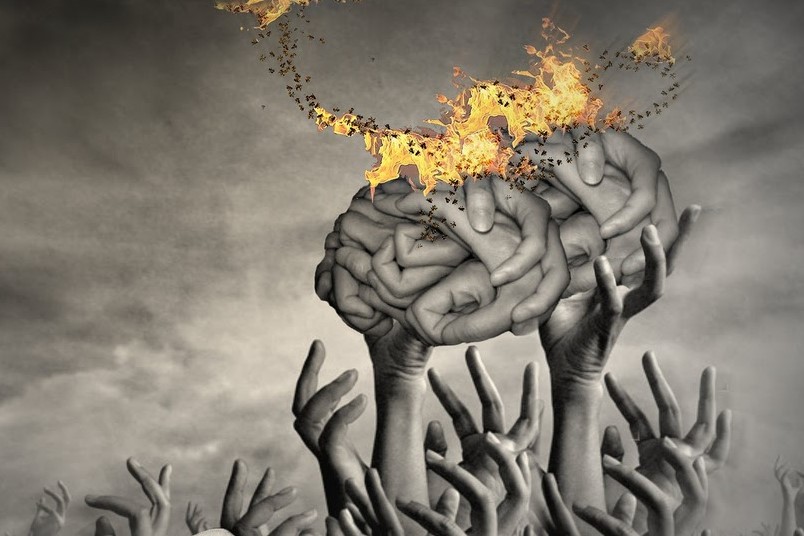
What is meant by the term iatrogenesis?
Iatrogenesis is a general term commonly used to refer to diseases, side effects, or complications due to drugs or medical treatments in general, which are wrong results
The development of medicine in the West has made it possible, especially through the discovery of antiseptics, anesthesia, and antibiotics, to greatly reduce mortality from all diseases related to bacteria, viruses, and trauma.
A separate discussion should be made for degenerative diseases or neoplasms where allopathic medicine is trudging along despite the fact that approaches are being attempted in research in multiple aspects with encouraging results, such as in genetic research or those in neuroscience.
Definitely positive discoveries but they often only go to affect the symptom, at least in applied medical prophylaxis.
One negative aspect of Medicine that has always been known is the side effects of the drug or more generally of patient care.
In all types of Medicine, traditional and non-traditional, side effects occur.
This event is framed in the definition of Medical Iatrogenesis
The definition takes into account patient care, not just the drug, so it is good to define what causes fall under the statistics.
In the United States, monitoring of this phenomenon is very thorough, and a chilling statistic has been found: iatrogenesis is the third leading cause of death after heart attack and cancer(1).
Causes of Iatrogenesis
- Medical errors
- Negligence or faulty procedures
- Interaction between prescribed drugs
- Side effects of prescribed drugs
- Underestimation of adverse effects due to drug administration
- Abuse of drugs that induce resistance to antibiotic treatments
- Untested treatments and radical treatments
- Partial diagnoses
- Hospital infections
- Medical trials
- Physician-assisted suicide
- Side effects accompany all current industrial expansion, in all fields.
In medicine this harm manifests itself as iatrogenesis (= “originated by physicians,” from the Greek “iatros” = physician and “genesis” = origin ed.).
Iatrogenesis is clinical when pain, illness and death are the result of medical treatment; it is social when health policies reinforce an industrial organization that generates malaise; it is cultural and symbolic when a behavior and a series of illusions promoted by medicine restrict the vital autonomy of individuals by undermining their ability to grow, to care for each other and to grow old, or when medical intervention mutilates personal possibilities to cope with pain, disability, anguish and death.
In Italy there are no firm figures, but, according to Silvio Garattini, director of the Mario Negri Institute in Milan and a national guru in pharmacological research, “400 Italians are hospitalized every day for side effects of drugs.”
The data would suggest an estimate of between ten and twenty thousand total cases annually; data these to be taken with a grain of salt and verified, if you can.
How many of these in deaths is unknown.
One must take into account the fact that statistics, absent nationwide in Italy, take into account emergency hospitalizations and posthumous reports that physicians are not required to attend to and in these cases, therefore, even record.
Think of how many cases of post-vaccine fever that go unreported or how many side effects that we are unaware of and do not report just because of ignorance, sometimes our own sometimes of the bugiardine.
We can therefore say, without fear of denial, that the estimates are almost certainly downward.
As Tito Boeri reminds us in Internazionale(2) only “2.4 percent of drugs launched on the market between 1981 and 2008 represent major therapeutic advances. Eighty percent of new drugs are copies of existing products.”
The only data that has really changed is the price of these drugs, in some cases tripled.
Part of this “progression” in cost may perhaps be due to the fact that the pharmaceutical industry’s investment in marketing is about twice as large as its investment in research.
In fact, from a comparison with data reported in the 2008 OsMed Report(3) we find that in Italy drug consumption has increased by 60 percent with a total expenditure (public and private) of 24.4 billion euros.
(1) Dr. Barbara Starfield of the Johns Hopkins School of Hygiene and Public Health, Journal of the American Medical Association, July 2000
(2) INTERNATIONAL 814, Sept. 25, 2009, p. 89 by Tito Boeri
(3) http://www.agenziafarmaco.gov.it/sites/default/files/OSMED_2008.pdf
Read also
Emergency Live Even More…Live: Download The New Free App Of Your Newspaper For IOS And Android
What You Need To Know About Substance Use Disorder
How Paramedics Can Treat A Substance Abuse Patient
Substance Abuse In Emergency Responders: Are Paramedics Or Firefighters At Risk?
Methamphetamine: From Drug To Substance Of Abuse
Drug Therapy For The Treatment Of High Blood Pressure
Non-Pharmacological Treatment Of High Blood Pressure



